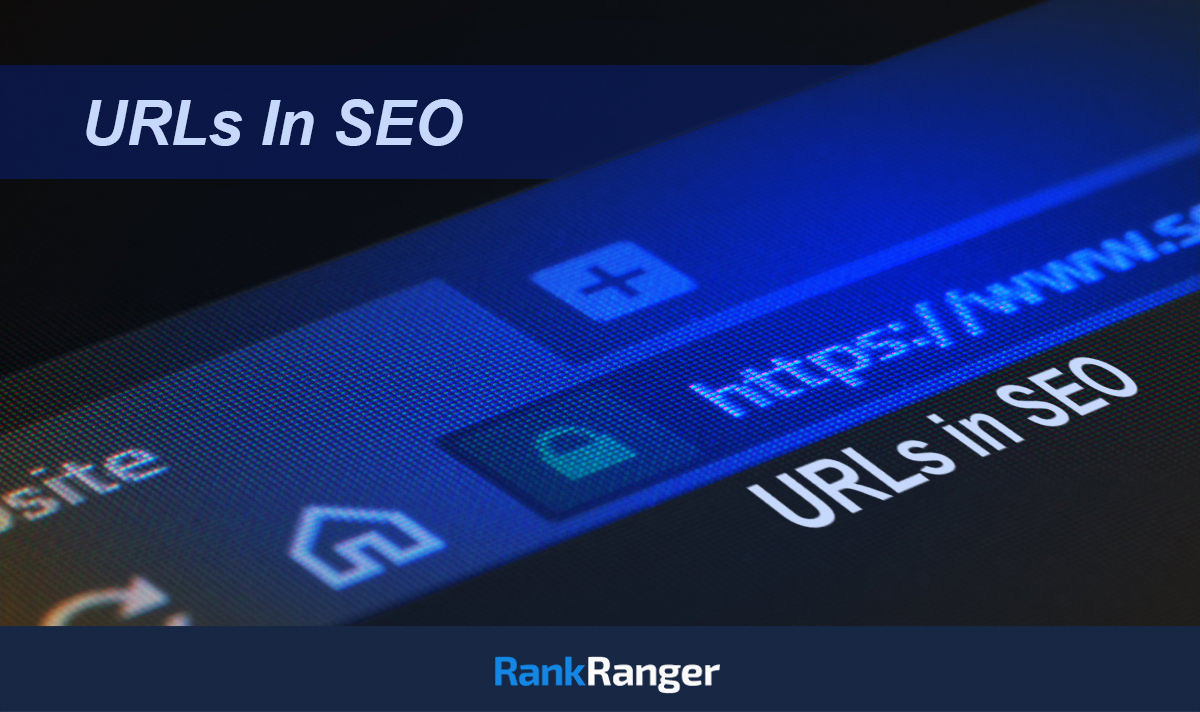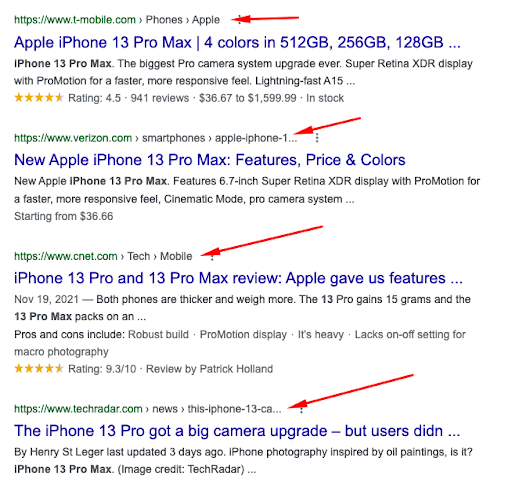
Posted by
Liraz Postan

SEO practices change and evolve – this is no secret. So, when it comes to URLs, they usually aren’t a top priority for ranking high.
But do URLs matter for SEO in the long run?
Yes!
This element might be less significant than titles, headings, and keywords, but it plays a vital role in helping your website rank high. Therefore, excluding URLs from your SEO strategy could cost your website to perform poorly. URLs help browsers and crawlers access and shine a light on your webpages, so their structure and the overall site architecture are vital for SEO.
There are multiple ways to structure your URLs, and they will help in complementing your SEO strategy. That’s why we’ll be going over the basics to show you how you can structure your URLs and help your website rank higher.
Without further ado, let’s dive in.
What is a URL?

Before we get into details, it’s essential to understand what URLs actually are.
According to Mozilla, URL stands for Uniform Resource Locator, and it’s an address of a unique resource on the Web.
Any legit URL can redirect users to a unique resource on the Web. These resources include HTML pages, CSS documents, images, files, and all kinds of web pages.
Computer networks and servers communicate with one another through IP addresses that consist of numbers and letters. For example, every device connected to the World Wide Web has its own unique IP number.
However, exclusively using an IP address to navigate through the Web is without a doubt complicated. So, that’s why URLs were created – to help users navigate hassle-free.
The best way to look at URLs is to consider how we use our home addresses. It’s far easier to find someone when you know their address, and we’re sure it would be difficult if our addresses consisted of random numbers and letters.
Every URL contains multiple elements, including the name of the protocol you need to access and a resource name.
URL protocols can include:
- HTTP (Hypertext Transfer Protocol)
- HTTPS (HTTP Secure)
- FTP (File Transfer Protocol)
It’s important to remember that the resource represented by the URL is managed by the Web server – so, it’s up to the webserver to manage this resource and the overall structure of the URL.
What Is URL Structure?
Let’s start with a basic example:
http://www.example.com/cameras/?q=digital&id=2
A URL is made up of the following parts:
- A protocol (http://)
- Domain (www.example.com)
- Subdirectory (cameras/)
- Query strings (?q=digital)
- Resource id (id=2)
This is how most URLs on the internet are structured. It’s vital to understand the structure itself before you can work on the structure for SEO purposes.
How To Structure a URL?
URL structure can be used to allow users to see how the site is organized, providing the surfer with a sense of familiarity with any given site. Additionally, the URL is a door through which people can navigate to your site in certain conditions. Whereas people would often exchange URL addresses to find websites in the past, now people often look up websites through search engines instead. Links are still a very common tool that appears online, where the entire URL structure is displayed.

Here are some essential tips for structuring an SEO-friendly URL.
1. Find the best alternative
Like we mentioned before, in SEO, and especially with URLs, there are no given rules that would guarantee success – it can be a guessing game. However, what you can do is to look into well-performing websites on search engines and study their URL structure.
How do they look? What do they consist of?
You can never go wrong by structuring a URL that’s simple, makes sense when searching, and is easy to remember. The best strategy here is to create an intuitive URL that both users and engines can read, understand, and make a connection between the web pages of your website.
Once you’ve figured this out, the rest of the aspects all fall into place easily.
2. To www or to not www?
IMO, Nowadays, using www is completely unnecessary.
Using the www prefix today can make your website feel old and out-of-****.
Additionally, it takes longer to type in and actually get to the destination. On the other hand, hiding the www prefix can make your domain seem cleaner and is easier to redirect to the right page in case of a typo.
Doesn’t matter what you decide, just make sure your site is consistent using the same structure.
3. Descriptive Is Good
When publishing a page on your website, it’s crucial to be as descriptive as possible. Some websites ignore this, and their page’s URLs consist of random numbers or letters.
What does this lead to?
Confusion.

You should always strive to make it easier for users and crawlers to understand the intent of your pages better. That’s why being descriptive and setting the expectations of the content on your website is crucial. Moreover, this can improve click-through rates immensely, which also contributes to your SEO game.
So, don’t skip through the tedious tasks – take your time and be descriptive.
4. Use the Power of Keywords
Keywords are, without a doubt, the most popular entities when it comes to SEO. They represent words that users commonly type in their search bar when looking for answers or products.
Using them in your URL can immensely benefit your SEO strategy. Moreover, it’s important to use an effective keyword research tool first to underline which keywords to use. Then, make sure to use just a few keywords and not overstuff your URL; otherwise, your pages can be marked as spam.
If you use the right amount of keywords, crawlers will read the page’s URL, and it can help you better index. Furthermore, make sure to add keywords to your meta description as well if you really want to stand out.
5. HTTPS Protocols Are Key
Making sure that your website is safe is one of the most important pointers for search crawlers to read your pages as credible. There are multiple ways to do this, but using HTTPS protocols is vital.
This applies especially to e-commerce websites. Users will feel safe when purchasing from your site – knowing that their personal information is kept at bay. It may come as a surprise, but not all websites use this protocol. So, make sure that your website stands out and is credible by applying this method.
How does this connect to the URL?
Some browsers, such as Chrome, include it in the padlock icon on the URL structure. This way, knowledgeable users will know that they’re using a website that’s safe and secure.
6. Old URLs Matter
Redirecting your users from broken links and non-existing pages to your new site is a next-level SEO strategy.
You’re likely to create a new page for some of your old content. However, these pages still matter in the long run, and you never know when a user will click on that page.
So, adding a ‘301 redirect’ to automatically take your users to the new URL is the best solution.
It’s important to not overstuff your website with too many redirects because it can slow down your site and its overall performance. This heavily influences the SEO of your page.
However, if you put in the work at the beginning and create an effective URL structure from the start, you’ll likely never have the need to use redirects. If you do decide to include them, make sure not to add more than three.
7. Remove Dates
If you format your blogs with dates, they will be part of the URL. Therefore, users will be able to see when the piece of content was uploaded and they might not click on the page.
Why?
Most users want up-to-**** content, and even if your content is most credible, original, and helpful – the fact that it’s a year old can discourage them from engaging with it. This can decline the click-through rate of your website, which, as we mentioned above, can harm your SEO game.
So, removing the postdate from the URL is the best solution for this. You should always update your content, as this also benefits the SEO of your page; however, simply removing the dates will do the trick just fine.
8. Use Lowercase Letters
Many website owners think that they’ll stand out if they use upper case letters. However, this only leads to a lot of confusion and 404 error pages. URLs are case-sensitive with everything that comes after their domain name.
So, for example, if you type in RankRanger.com, you’ll still end up on the page. However, if you type in rankranger.com/Blog, you’ll end up on our 404 page.
The bottom line is, users are not used to uppercase letters, so always make sure your URL consists only of lowercase letters.
9. Don’t Use Stop Words
In the world of SEO, keeping things easy and concise is effective. Try eliminating stop words such as and, or, a, an, the, for, and others. Even if it doesn’t make sense grammatically, the goal is to make your URL easy to read for crawlers.
10. Keep It Short and Simple
It all comes down to this – keep your URL short, simple, and concise. At the end of the day, you can implement all these things, but if your URL is foot-long, then you’re playing a losing game.
This benefits both users, crawlers and it simply looks visually better. So, always look for the shortest alternative while implementing a crucial keyword.
How Do URLs Benefit SEO?
All of the above-mentioned entities benefit from two crucial aspects of SEO: user experience and general page rank.
Google and other search engines have stated that user experience plays a vital role in the overall SEO game. Although at first, it may be confusing how engines measure user experience – when you consider page speed or click-through rate, it all makes more sense.
When you structure simple URLs, portray precisely what the site holds, and redirect to the correct pages, you’re providing a great user experience. These are just to name a few, but all of the points made above tend to how the users will experience your website.
Moreover, keywords play an essential role here as well. When using them properly in your URL, users can easily get to the desired end goal. So, make sure you’re putting in a lot of work into developing a keyword strategy for your URLs as well.
URLs are clear pointers for engines to determine what the pages are about and how they relate to one another when it comes to page ranks. When you include proper keywords and follow the general guidelines for URLs, it’s easy for crawlers to index your page and bring more visibility to it. So, make sure to submit your sitemaps in Google Search Console once you’re satisfied with how you’ve structured your URL.
Page ranking and user experience are two of the essential SEO aspects, and working on your URL structure can immensely benefit you in this area.
Food For Thought

URLs are definitely an essential part of a proper SEO strategy. Although many professionals tend to put them on the bottom of the list – they should always be given a thought and time if you want to see your website perform well.
These are just a few elements that can improve your URL structure. So, make sure to get out on the Web and see what other websites do and how they structure their URLs.
Remember – SEO practices are ever-changing, and what’s in today – may very well be obsolete tomorrow.




